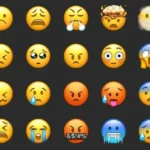
There are more than 600 muscles in the body, doing everything from pumping blood to moving food through the intestines, to helping lift heavy objects (like backpacks). Some of these muscles can be controlled, and others like the heart and intestines do their jobs without having to think about it. All muscles are made of basically the same material, very elastic (like rubber bands), and made up of thousands of tiny fibers. There are three different kinds of muscle – smooth, cardiac, and skeletal muscle.
Muscles make up about 40% of total body weight.
Smooth muscles are the involuntary muscles in your gut, blood vessels, and elsewhere that work without you consciously thinking about making them move.
The smallest muscles, like the smallest bones, are found in the middle ear, some of these are the tensor tympani (connected to the ear drum) and the Stapedius.
Cardiac muscles are in your heart.
Muscles cannot push, they can only pull. The reason the arm can push is muscles in the back of the arm pulling on the elbow!
Skeletal muscles are attached to the bone and help you with everyday activities ranging from sitting and standing to walking, typing, and doing housework.
The strongest muscles in the body? Pound for pound, it’s the muscles that you chew with – called the masseters!
Your body contains more than 600 muscles.
Humans are born with all of the muscle fibers they will ever have. They don’t grow new fibers, they just grow thicker.
Muscles are made up of special cells called muscle fibers.
If all of the muscles in the body could all pull in one direction, it would create a force of 25 tons!
The largest muscle in the body is the gluteus maximus.
Smiling takes 17 muscles in the face, while frowning takes 43!
The smallest muscles in the body are in your inner ear.
The heart is made up of muscle, called cardiac muscle. This muscle works all by itself with no thought. The heart beats anywhere from 60 to 100 times a minute, every minute, of every day in a human life!
Muscles are attached to bones by tendons.
The skeletal muscles, which are the ones that can be controlled by conscious thought, work with the skeleton, or the bones, to move the body. They attach to the skeleton with tendons, which are cords of tough tissue.
Muscles make up about 40 percent of your total body weight.
Some of the biggest muscles are in the back, near the spine. They are responsible for keeping the body upright and gives the body the power it needs to lift and push things.
The hardest working muscle in the body is the heart.
Skeletal muscles are also sometimes called striated muscle – this name comes from the light and dark parts of the muscle fibers making them look striped (striated means striped).
Some of your busiest muscles are those controlling eye movements.
Smooth muscles, which can’t be voluntarily controlled, usually occur in sheets or layers, one layer of muscle behind another. These are at work all over your body.
Most of the heat produced in your body comes from muscle contraction.
In the digestive system, the smooth muscles tighten up and relax, moving food through the body.
The motor cortex on one side of your brain controls muscle movement on the other side of the body.
Smooth muscles are also found in the bladder. When they are relaxed, the opening in the bladder is closed, which allows urine to stay in the bladder. When someone goes to the bathroom, they contract, which pushes urine out of the bladder.
Muscles usually work in pairs.
Smooth muscles in a woman’s uterus, which is where a baby develops and grows, push the baby out when it’s time to be born.
Muscles can’t push. They can only pull.
Smooth muscles are even found in the eyes, where they help keep the eyes focused, and help control the amount of light that enters the eye.









